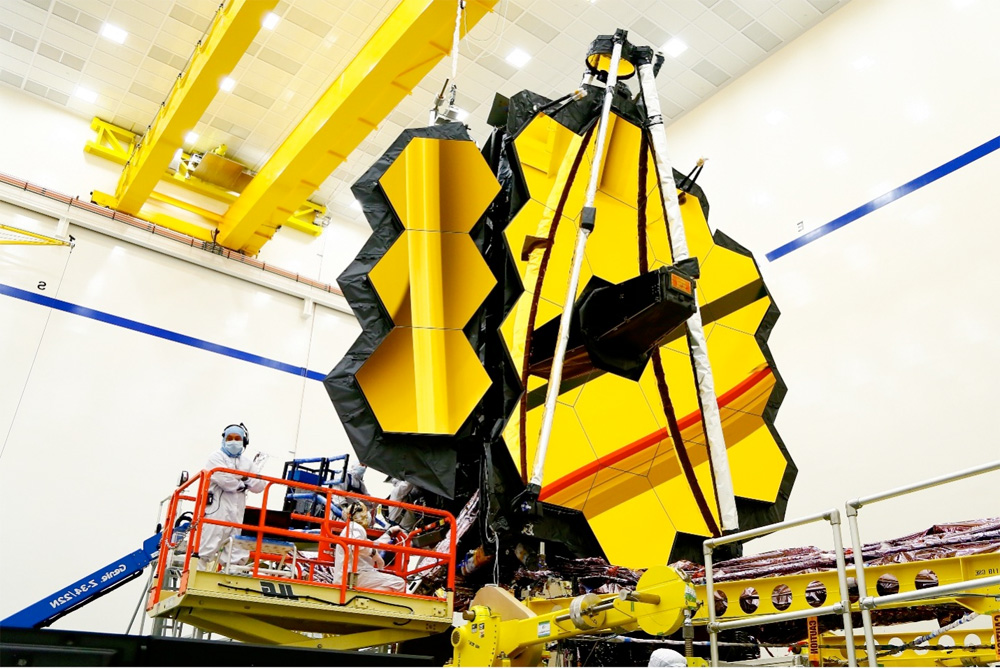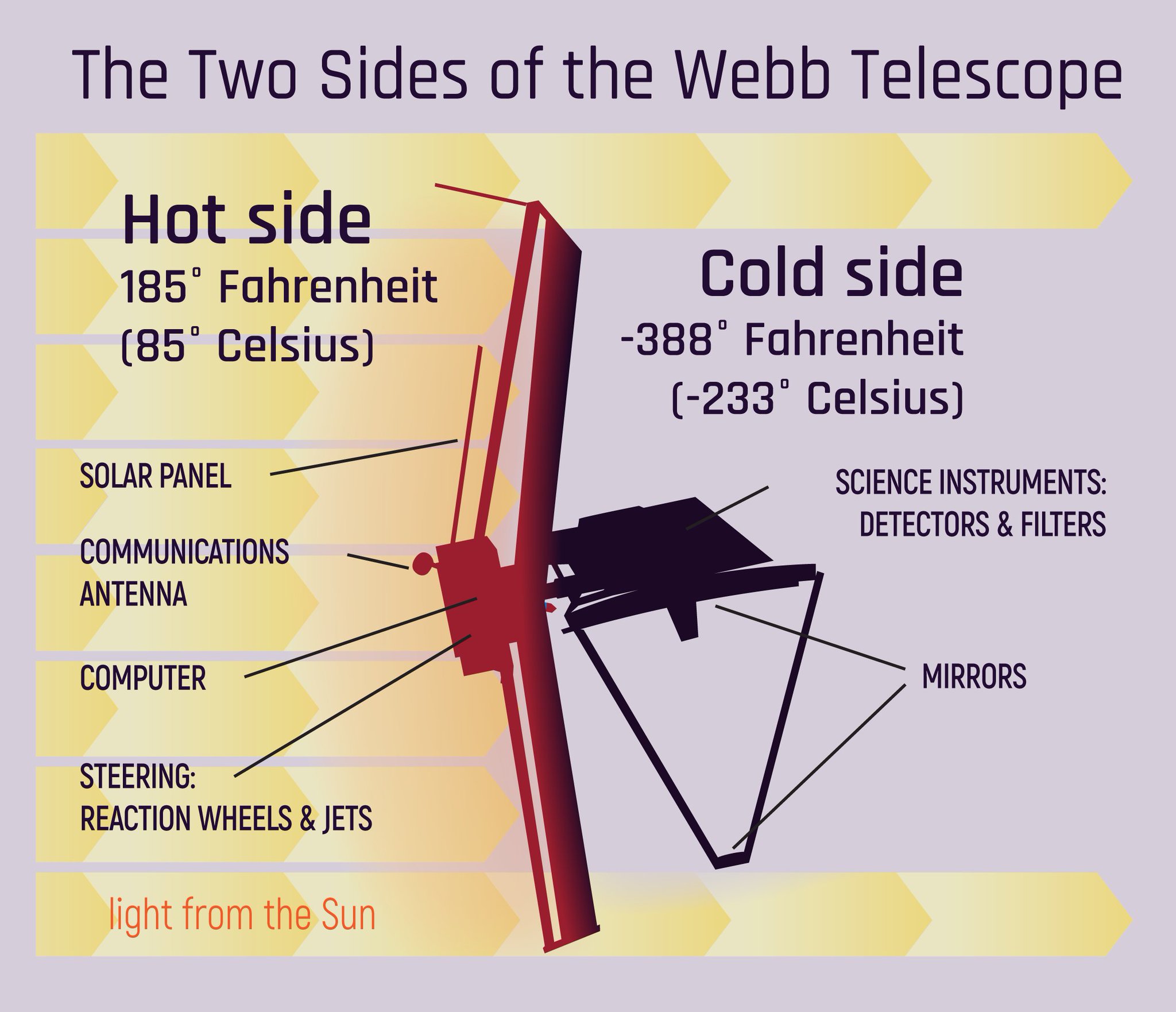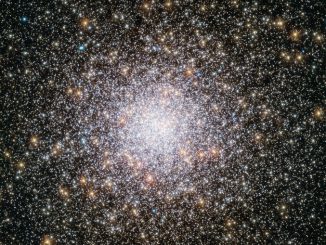
After successfully unfolding the James Webb Space Telescope’s tennis court-size sunshade and optical elements, scientists and engineers are now ready to begin a multi-step process to align the primary mirror’s 18 hexagonal segments to achieve a razor-sharp focus.
Each gold-coated beryllium segment is equipped with mechanical actuators allowing movement in six directions. A seventh actuator can push or pull on the center of a segment to ever so slightly distort its shape if needed.
Without alignment, the 18 segments would produce 18 separate images. Using the NIRCam instrument, engineers now will map the alignment of each segment and send commands to adjust the orientation and curvature as required to produce a single, sharply-focused image.

“Words can’t describe the pride and excitement the Webb team is feeling right now,” Alexandra Lockwood, a project scientist at the Space Telescope Science Institute in Baltimore, Maryland, wrote in a blog post. “We are all overjoyed with the incredible successes of the observatory to date.
“Now that the action-packed deployment sequence is over, we are moving into a much slower, yet deliberate, phase of the commissioning process. In the next two weeks, we will move each of the 18 primary mirror segments, and the secondary mirror, out of their launch positions.”
Once the secondary mirror and primary segments are precisely aligned, engineers will move on to calibrating Webb’s four science instruments while the observatory continues cooling down to its operational temperature of less than 50 degrees above absolute zero. The first science images are expected to be released in the early summer timeframe.

“We start with the mirrors off by millimetres, and we’re driving them to be aligned within less than the size of a coronavirus, like to 10s of nanometers,” said Jane Rigby, Webb operations project scientist. “It’s this very deliberate process that is time consuming.”
Rather than showing off initially blurry “first light” images in the next few weeks, “we want to make sure that the first images that the world sees … do justice to this $10 billion telescope,” she said. “So we are planning a series of ‘wow’ images to be released at the end of commissioning.”
Said Lockwood: “The novelty and variety of science that this observatory can produce requires thousands of things to be checked ahead of time. But rest assured that this summer will sizzle with the hot (nay cold?) observations we will soon be sharing!”



